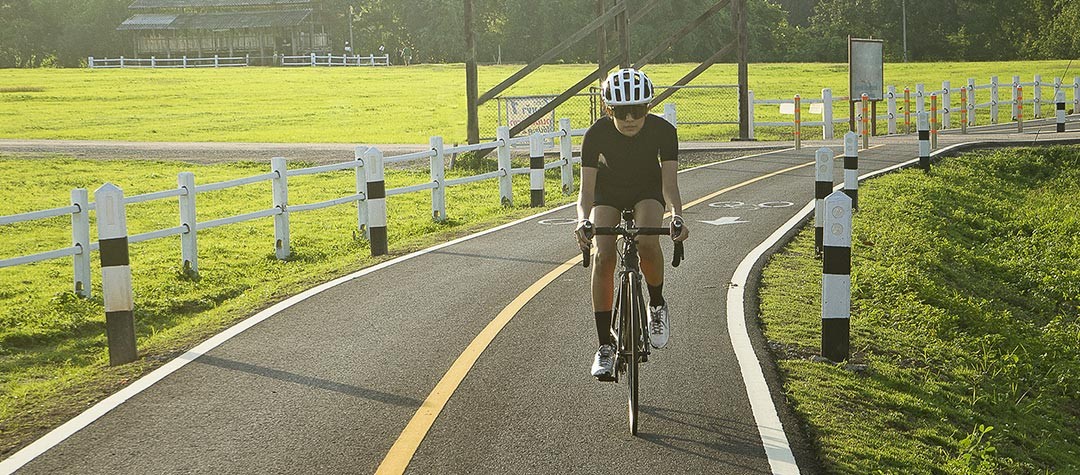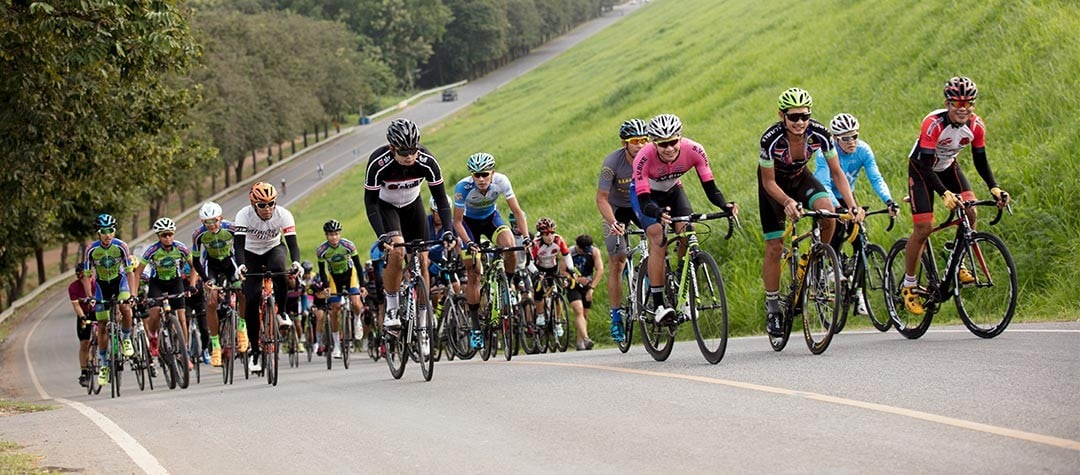Buying a road bike seat can be confusing, but this guide will provide you with what you need to know about choosing a saddle.
With so many different styles, variations and prices of saddles it is hard to know what is best for you to buy, so here is our guide on finding the ideal seat for your road biking needs.
Comfort is an essential element for any cyclist, whether a road veteran or a biking beginner. An uncomfortable saddle can considerably affect your performance, experience and any post-ride soreness. Road biking should not be overly uncomfortable, yet many people will put up with this discomfort for lack of knowledge as to what saddle is best for them, mainly due to an overwhelming amount of information and variety on bike saddles.
Padding
-
More or less cushioning?
Most people would assume that to ensure the most comfort when riding is to ensure sufficient padding on the saddle, the more padding the more comfort, but this is actually incorrect. Particularly for increased distance or speed road cyclists, increased padding can actually cause more discomfort.
The pelvis is designed with two “sit bones” known as the ischial tuberosities, two bumps that take the body’s concentrated weight when sitting down. If the seat has a lot of cushioning the weight is distributed around the area causing pressure between these bones, areas not designed to withstand excessive weight.
This is not to say a beginner should buy a bare carbon saddle, but the firmer padding and less cushioning will actually provide more comfort for road riding. Increased padding may seem better at first glance, but more cushion means more contact and movement, resulting in an increase of heat and discomfort.
-
Types of cushioning:
The ideal padding for a road bike is firm foam, as it doesn’t compact as easily as softer foam and provides a firmer area for the rider, particularly longer distance and over 200lb (approx 90kg) riders. The spring back action will provide a suitable balance of comfort both short and long term. Also, firmer foam has a longer lifespan, as overly cushioned and gel saddles will inevitable wear more easily than firmer saddles, saving you money in the long run.
Gels and saddle pads can also be a great addition to provide immediate relief from any uncomfortable spots, but as they usually migrate as you ride, they are less preferable than foam saddles.
Shape of saddle
Despite popular belief, it is actually the shape of the saddle that will alleviate road riding discomfort most significantly, not padding. But unlike padding there isn't one specific type of saddle shape that fits all, as each individual will suit a different width and shape.
Saddle width should be correlational to the riders sit bones, if too narrow a saddle then the bones which should bare the brunt of the weight will hang off and pressure will be applied to the areas between the bones, if too wide this could cause chafing of the inner thighs. Most bike shops will have a device available for the measurement of sit bones using memory foam, helping you determine the appropriate saddle width.
Generally women’s sit bones are slightly wider than men's, but biomechanical variations and riding style will generally determine the best width and shape of the saddle for you. If you tend to ride lower to the handle in a more aggressive posture then the narrow and flat saddle will be most preferable. For those more upright riders, a curved and wider saddle will suit you more.
But before you throw away your old saddle and fork out for a new one, adjustments such as the height and position are major factors for the onset of saddle mismatch symptoms, and the shape of the saddle may be perfectly well suited.
Variations in saddles
One element of the shape that can affect your saddle comfort is the style variations that are available on the market; cut-outs, split seats and others could all offer potential saddle changes that add comfort to your ride. Whilst some may appear to offer the ideal solution to residual discomfort it is best to identify whether these unusual saddles offer the sought after solution.
Leather is the ideal material for saddles as its breathable nature allows for enough give and porousness, keeping cool during the hotter weather conditions. Leather can also be broken in, fitting the individual shape of the rider, though this can take time.
-
Cut-outs and Relief channels:
These types of saddles are ideal for riders who have found their preferable shape, but still experience discomfort as these saddles relieve pressure placed on more sensitive areas and soft tissue. The Ideal Saddle Modification saddle (ISM) modeled from the idea of a toilet seat is a good example of cut out saddles which can alleviate residual issues.
Relief channels are also a great addition to a saddle decision which provide a relief of pressure without the full cut out style. Particularly as some find the full cut out style to put additional pressure on the surrounding areas and even pinch skin, relief channels are an ideal option for additional comfort.
-
Split seats:
Split seat are generally known as noseless saddles, consisting of two separate pads aimed at relieving pressure, particularly male riders. Although this style saddle sounds promising, these seats can in some instances do more harm than good, causing less control and support for the rider.
These pads have to be angled downwards which cause the rider to slide forward, subsequently adding pressure on the wrists, hands and neck, resulting in further problems. To avoid this, angling the pads upwards can interfere with thigh muscles and cut off circulation to the thighs, so this type of saddle should be approached with caution.
-
Women’s saddles
Women generally have wider hip and pelvis bones than men, around 1cm wider, and although this may not seem much, this difference can cause irritating problems for female riders. As most saddles, particularly high performance, are designed for men, these saddles can cause increased pressure on soft tissue due to women’s hip bones hanging off the saddle.
To avoid this pressure some angle the seat downwards, but this usually causes the rider to slide forward and put pressure on the arms and neck, and so instead exploring the women specific saddles available is highly advised. These saddles tend to be wider and shorter than men's, commonly with a larger cut out in the centre of the saddle or more pronounced cutaways at the side of the seat, making them more female friendly.
Although not all women will require a wider saddle, exploring the range of both male and female specific bikes can help those with wider sit bones find a comfortable saddle.
Adjustment
Before you go throwing out your saddle and searching for hours on end for a new one, make sure it's not a simple problem that is causing discomfort or potential problems. Ensuring the correct height and angle can change your riding experience completely and should be done before dispensing with your current saddle.
If you're wriggling about on the seat as you ride it may be a sign that the seat isn't high enough. Try adjusting your seat 1cm at a time, the bike should feel faster and lighter, and keep increasing until the seat is too high and return back to the previous height. This will alleviate potential knee problems that a too low seat can cause.
Angles of the seat can also be adjusted to ensure proper positioning and comfort. Some men prefer a slightly dropped rear of the saddle and vice versa for women which may be perfectly fine, but extreme angles can cause problems for the thighs, arms and neck and should therefore be avoided.
Shopping tips for bike saddles
Even if you have found the perfect saddle on paper, practicality may differ, and so it is always best to try before you buy! Some retailers will do a scheme or swapping system where you can test out a saddle for a period of time, decide if you like it and purchase it or swap for a different saddle. This is a great way to check if your assumed ideal saddle is as great as you think. This unfortunately means steering clear of online shopping as it's always good to test and examine your saddle before buying it.
It is also important to double check their return policy, most allowing you to change saddles after 30 days or so. But if your purchase does not include any returns provisions you may end up stuck with an unsuitable saddle.
Prices for saddles, like with all bikes, vary greatly, and generally saddle quality is correlated with price. As the price increases the materials will improve and the weight will drop. If your budget allows, spending a bit more for the ideal saddle can benefit you greatly in the long run.















